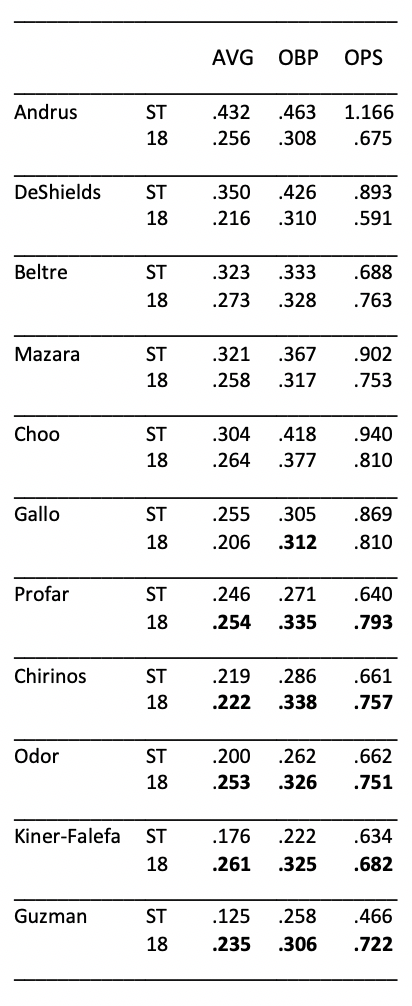We are now in the dog days of spring training. The newness of baseball’s arrival at our front porch has worn off. Now it’s time for it to get its lazy butt off the couch and get a job.
So, while we wait for opening day to arrive, it might be fun to see how accurate of a barometer spring stats really are. How does a player’s performance in spring relate to how he will do in the season?
Looking at the eleven Rangers who got significant playing time on offense in 2018, let’s compare their final spring training stats to their final season stats. Numbers in bold indicate an improvement over spring stats.
It’s split pretty evenly. Six hitters weren’t able to live up to their spring stats. And five exceeded them.
Now, look let’s do the same with the seven pitchers who got the bulk of the starts, comparing their spring stats to their regular season stats. When it came to ERA, five of the seven pitchers were better in spring than they ended up being during the season. Much better in spring. And toss in Matt Moore, who was a garbage in spring and during the regular season, only slightly less hideous when it counted.
So, what does this tell us in the small sample size of one year? Pitchers are ahead of hitters in spring. Once batters get into a rhythm, they catch up. For hitters, spring stats are a crap shoot. For a pitcher, this might be the best they are going to be.
Not scientific, to be sure. But it is interesting. And it is the middle of spring training. So it’s something more than nothing.
